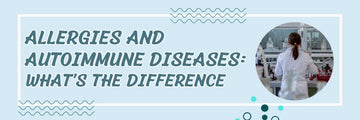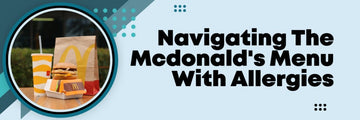Blog
Navigating Seafood Delicacies: Lobster Allergy
by
Donna Mastriani
on
Sep 25, 2023
Most people enjoy a nice seafood dinner as a special treat. Those people, however, don’t live with a lobster allergy. Within the world of food allergies, lobster is a highly-recognized allergen, even within the sector of a seafood allergy. Does a lobster allergy mean that you can never eat seafood? Does it mean that you can’t even go to seafood restaurants? Can you differentiate a lobster allergy from a seafood allergy through
allergy testing? All that and more is waiting for you below.
Are lobster allergies common?
Of course, some allergies are more common than others. In general, shellfish allergies are considered the most common adult food allergy. In the US, it is the most common allergy; in the UK, it is high on the
list of 14 top food allergens.
Interestingly,
a lobster allergy can develop at any point in someone’s life. You can have a lobster allergy diagnosis even if you’ve eaten lobster with no reaction in the past. The same goes if you have never had a diagnosed food allergy before.
If you test positive for a lobster or fish allergy, it’s most likely that it will be lifelong, and it’s rarely outgrown. While you can grow out of some allergies, shellfish is unlikely to be one of those. This is because it causes a strong reaction with such a small amount.
Is a lobster allergy different from a seafood allergy?
A lobster allergy is a type of seafood allergy. Lobster allergies are considered crustacean allergies, which is one sector of a seafood allergy. The second sector is mulloscs, which include octopus, clams, etc.
If you are allergic to lobster, it’s classified as a seafood allergy. But you can eat the other types of seafood without worrying about cross-reactivity.
What is the most common seafood allergy?
Of the two sectors of a seafood allergy,
the most common is a crustacean (aka lobster and other shellfish) allergy. However, you will want to get
allergy testing to know for sure since it is still possible to have a mollusc allergy.
The main reason many feel they are allergic to both types of seafood is cross-contamination. In seafood restaurants, for example, both types of seafood are prepared. So, surfaces become cross-contaminated. Also, the allergic protein in shellfish is powerful and can even cause a reaction after it has been boiled. Eating safely at a seafood restaurant is challenging for those with a lobster allergy. Most opt for eating a shellfish-free dinner at home where they can be sure of no cross-contamination. Better yet, with no shellfish being on the premises (more on this shortly).
Seafood allergies and allergy testing
Seafood allergies often cause severe anaphylactic reactions. So, knowing what you are allergic to (and what you can eat) is essential to keep yourself safe and well. Also, a shellfish allergy is one of the
strongest causes of exercise-induced anaphylaxis. This occurs when you eat a food allergen and then exercise. The exercise creates an onset of anaphylaxis.
Mostly, someone with a lobster allergy will also react to other types of shellfish, such as prawns. This is because the protein is the same from one type of shellfish to the other. You should never attempt to eat a different type of shellfish because it is “different from lobster.”
The protein in shellfish also appears in dust mites, cockroaches, snails,
and more. None of us would connect the dots between dust mites and shellfish. Yet, you can have an allergic reaction to a dust mite even if you have a lobster allergy.
Lastly, the lobster allergic protein is so strong that people with a lobster allergy can have a full-blown allergic reaction to the scent of lobster. This could be on its own or mingled with other types of seafood). This makes it a very highly allergic food.
No matter how you look at it, an allergy is a serious business. You should understand its ins and outs when looking at your relationship with seafood. Comprehensive
allergy testing is an easy way to know precisely what your body is reacting to and how to protect yourself from this allergen. Often, allergy testing reveals a different allergy than most people would think. The only way to know for sure is to test yourself and then look at the results to change your diet as needed.
Seafood is a delicious treat for many people, sure enough. If you have seafood allergies, or you suspect you have a lobster allergy, the best gift you can give to yourself is knowledge -- through an accessible allergy test. Since there is no reason to put yourself at risk needlessly, use this as your nudge to consider at-home allergy testing for yourself and everyone in your family!
 Interestingly, a lobster allergy can develop at any point in someone’s life. You can have a lobster allergy diagnosis even if you’ve eaten lobster with no reaction in the past. The same goes if you have never had a diagnosed food allergy before.
If you test positive for a lobster or fish allergy, it’s most likely that it will be lifelong, and it’s rarely outgrown. While you can grow out of some allergies, shellfish is unlikely to be one of those. This is because it causes a strong reaction with such a small amount.
Interestingly, a lobster allergy can develop at any point in someone’s life. You can have a lobster allergy diagnosis even if you’ve eaten lobster with no reaction in the past. The same goes if you have never had a diagnosed food allergy before.
If you test positive for a lobster or fish allergy, it’s most likely that it will be lifelong, and it’s rarely outgrown. While you can grow out of some allergies, shellfish is unlikely to be one of those. This is because it causes a strong reaction with such a small amount.












